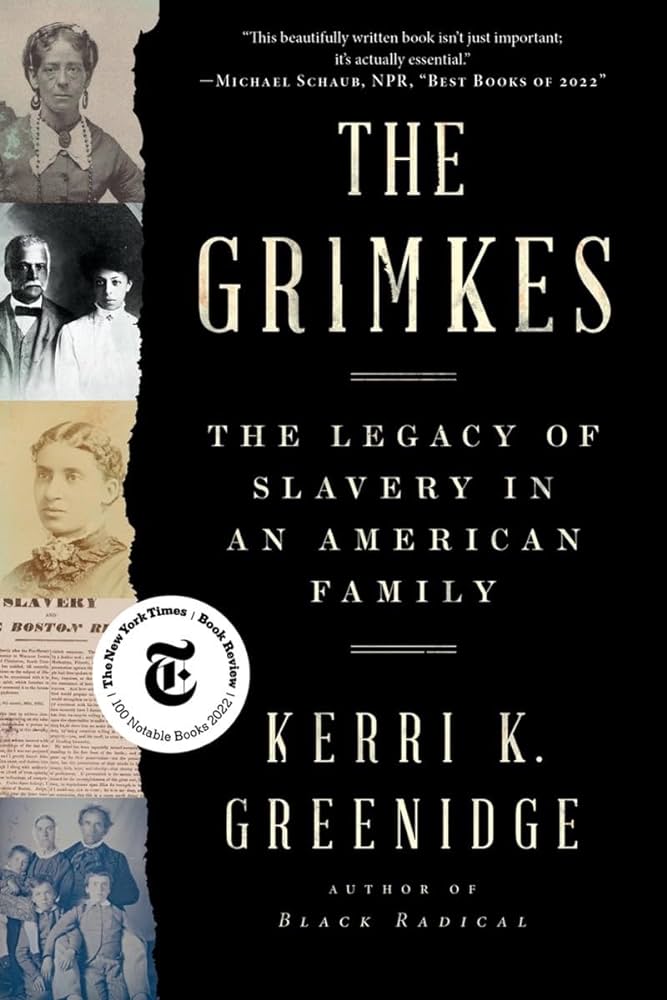Perhaps the most famous of the Grimkes were the celebrated sisters Sarah Moore Grimke, born in 1792, and Angelina Emily Grimke, born in 1805, who grew up in one of the largest slaveholding families in Charleston. Their father, Judge John Faucheraud Grimke, had 14 children and owned hundreds of enslaved people, which made him extraordinarily wealthy. Judge Grimke believed in the institution of slavery and in the use of violence to maintain it. Brute force was the Grimke way, and it was passed down to his sons, who beat and whipped their enslaved human property, even those who shared a bloodline with them.
Sarah Grimke expressed at an early age her abhorrence of slavery. As an adult, she persuaded Angelina to leave the South with her, and the pair moved to Philadelphia and then to Boston, where they fought for the end of slavery and for women’s rights. The Grimke sisters were often praised for abandoning the family business; they gave public lectures and wrote antislavery essays. Angelina married the abolitionist leader Theodore Dwight Weld and had her writings published to acclaim in William Lloyd Garrison’s leading antislavery newspaper, The Liberator. Most notably, Angelina wrote “Appeal to the Christian Women of the South,” imploring Southern women to petition their state legislatures and church officials to abolish slavery. Together, Sarah, Angelina, and Theodore penned American Slavery as It Is in 1839, which became a bestseller in abolitionist circles.
The Grimke sisters were opposed to slavery, but as was the case with some white abolitionists, Greenidge notes, their cause “rarely included a recognition of the lives of the enslaved…. Black people themselves were mere objects within the constellation of sin that surrounded [them].” In this way and others, the Grimke sisters were confounding. They were outspoken regarding abolitionism and women’s rights. They took to the lecture circuit, railing against the injustices of slavery and, to some extent, patriarchy. But they also did not see Black people as equals, even if they saw slavery as an abomination, and they were not always willing to confront the violence inflicted on their Black neighbors. Greenidge opens her book with the horrific story of a white mob attacking Black people in Philadelphia in 1834. During the riot, Black homes and businesses were destroyed and Black churches were reduced to rubble. For three consecutive days, more than 600 white men terrorized the city’s Black residents. No one was spared, neither the young nor the old. A Black man named Daniel Williamson, believed to be a former slave of George Washington, was dragged from his home and kicked mercilessly. He was 95 years old. This was not the first time Philadelphia had exploded in violence against Black communities. In 1820 and 1829, and again in 1835, 1838, 1842, and 1849, anti-Black and anti-abolitionist mob attacks and campaigns of violence turned the city into a ticking time bomb for Black residents. Yet during the 1834 riot, the Grimke sisters said not a single word in recognition of the racial violence that destroyed Black life in their city. Nor did the sisters ever fully confront their own complicity in their family’s slaveholding. They never discussed their own role as slaveholders or attempted to center the voices of the enslaved. Although they didn’t intervene when the violence was taking place, they certainly could have. Their refusal to acknowledge and make amends for their actions—or lack thereof—was not a hypocrisy limited to themselves. Many white liberals, then and now, have bleeding hearts and blind spots.
